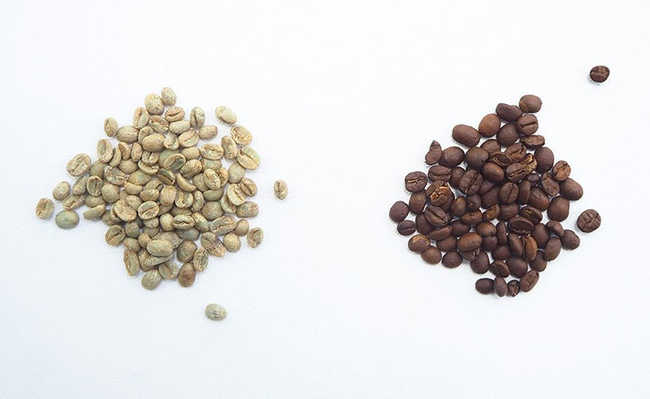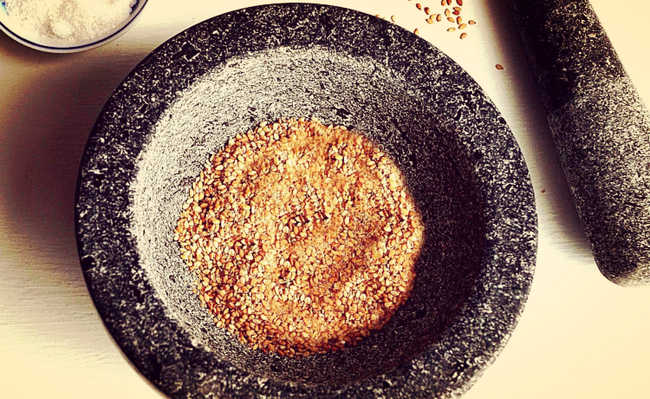How to replace milk with nine tips
From sesame milk to quinoa milk, check out tasty and healthy options to replace milk

Edited and resized image of Crissy Jarvis is available on Unsplash
Knowing how to replace milk can be a hand on the wheel for those who have problems with lactose, people who adhere to the vegan philosophy or who prefer to avoid consuming milk and its derivatives for other reasons. If you fit into one or more of these groups, be aware that it is possible to continue drinking your latte , smoothies and other beverages and foods without animal milk.
Why do some people want to replace milk
- Allergy: 2-3% of children under the age of three are allergic to cow's milk. This can cause a range of symptoms, including rash, vomiting, diarrhea, and severe anaphylaxis (see studies about it here: 2, 3);
- Lactose Intolerance: It is estimated that 75% of the world's population is intolerant to lactose, the sugar found in milk. This condition occurs when people are deficient in lactase, the enzyme that digests lactose (see study about it here: 4);
- Dietary restrictions: Some people choose to exclude animal products from their diets for health or ethical reasons. For example, vegans exclude all animal-derived products, including cow's milk so as not to contribute to animal cruelty;
- Potential health risks: Some people choose to avoid cow's milk due to concerns about possible contaminants, including antibiotics, pesticides and hormones (see studies on this here: 5, 6, 7).
- Is milk bad? Understand
- The dangers and cruelty of animal confinement
The good news is that there are many options available if you want or need to replace cow's milk.
What to consider before replacing milk:
- Calcium content: Cow's milk is rich in calcium, essential for healthy bones and to prevent osteoporosis. With the exception of sesame milk, most vegetable milks are low in calcium. But processed milks are usually fortified with calcium; therefore, choose one that contains at least 120 mg of calcium per 100 ml.
- Vitamin B12: is found naturally in animal products and is essential for a healthy brain and immune system. People who limit or avoid animal products from their diets should choose milk fortified with B12 and supplemental B12 as recommended by a nutritionist or nutritionist;
- Cost: Non-dairy milk is often more expensive than cow's milk. To cut costs, try making herbal milk at home. However, a disadvantage of making your own milk is that it will not be fortified with calcium and vitamin B12.
- Additives: Some non-dairy milks may contain additives such as carrageenan and vegetable gums for a thick, smooth texture. While these additives are not necessarily harmful to health, some people prefer to avoid them.
- Food needs: Some people have allergies or intolerances to certain ingredients used in plant-based milks, such as gluten, nuts and soy. Be sure to check labels if you are allergic or intolerant.
Options to replace cow's milk
1. Sesame milk
Sesame milk can be made at home. Just mix the tahini (sesame paste easily found in supermarkets) with water and mix. Tahini is the second largest source of calcium that exists (after algae), in addition to being an excellent source of protein, fiber, copper, manganese, methionine (amino acid) and omega-3 and omega-6. It has a bitter taste that can be masked with sweet, sour or salty ingredients, and depending on how much water you add, it can be creamy or with a skim milk texture. Use with chocolate, coffee, cake recipes, creams, tapioca sauces, snacks, etc.
But only mix water in the amount of tahini you are going to consume right away, as it makes the tahini go bad earlier. To learn more about tahini, take a look at the article: "What is tahini and its benefits". And to know more benefits of sesame, take a look at the article: "Benefits of sesame". But remember: by mixing sesame paste with water, the amount of vitamins and minerals is reduced.
2. Almond milk
Almond milk can be made from whole almonds or from a mixture of almond butter and water. It has a light texture and a slightly sweet taste. It is a way to replace the milk used in coffee, in granola and can be used as a substitute for cow's milk in roasts and desserts, such as brigadeiro.
One cup (240 ml) of sugar-free almond milk contains 30 to 35 calories, 2.5 grams of fat, 1 gram of protein and 1 to 2 grams of carbohydrates (see studies on this: 16, 17). Compared to cow's milk, it contains less than a quarter of the calories and less than half the fat. It is also significantly lower in protein and carbohydrates.
- Ten high protein foods
- Sweet Almond Oil: Benefits for Beauty and Health
It is one of the lowest-calorie non-fat milks available and is a great choice for those who want or need to cut back on calories in their diet. In addition, almond milk is a natural source of vitamin E, a group of antioxidants that help protect the body from disease-causing substances known as free radicals.
- Vitamins: types, needs and times of intake
- What are free radicals?
- Antioxidants: what are they and in what foods to find them
Almond milk, on the other hand, is a much less concentrated source of the beneficial nutrients found in whole almonds, including protein, fiber and healthy fats. This is because almond milk is made up mostly of water. Almond milk sold in a box often contains only 2% of the oilseed. Processing removes the skin from the almond, which significantly reduces the content of fiber, proteins, vitamins and minerals.
To get the most out of the nutrients and benefits of almonds, choose almond milk brands that contain a higher almond content, around 7 to 15%. Or make your own milk yourself at home. Almonds also contain phytic acid, a substance that binds iron, zinc and calcium and reduces absorption in the body. This can slightly reduce the absorption of these nutrients by almond milk (see studies about it here: 18, 19). Learn how to reduce the phytic acid content of food in the article: "What is phytic acid and how to eliminate it from food".
- Fiber-rich foods fight diabetes and high cholesterol
3. Coconut milk
Coconut milk is made from water and the white pulp of dried coconut. It can be made at home, but is easily found in markets. It has a creamy texture and a sweet taste with the strong presence of coconut flavor. A cup (240 ml) contains 45 calories, 4 grams of fat, no protein and almost no carbohydrates (see studies on this: 20, 21).
- Coconut milk: uses and benefits
Coconut milk contains one-third the calories of cow's milk, half the fat and significantly less protein and carbohydrates. In fact, coconut milk has the lowest protein and carbohydrate content of non-dairy milks. It may not be the best option for those with higher protein needs, but it would be suitable for anyone looking to reduce their carbohydrate intake. In addition, about 90% of coconut milk's calories come from saturated fat, including a type of saturated fat known as medium-chain triglycerides. Some research suggests that these triglycerides may help reduce appetite, help with weight loss and improve blood cholesterol levels more than other fats (see studies on this here: 22, 23, 24, 25).
- Saturated, unsaturated and trans fat: what's the difference?
- Does altered cholesterol have symptoms? Know what it is and how to prevent it
On the other hand, a review of 21 studies found that coconut oil can increase total and "bad" low-density lipoprotein (LDL) cholesterol levels to a greater extent than unsaturated oils. However, much of this research is based on poor quality evidence and there is very little research on the effects of coconut milk specifically. At the end of the day, consuming a moderate amount of coconut milk as part of a healthy diet should not be a cause for concern. Finally, it is recommended that people with FODMAP intolerance or who are completing the elimination phase of the FODMAP diet limit coconut milk to one 1/2 cup (120 ml) serving per day.
4. Oat milk
In its simplest form, oat milk is made from a mixture of oats and water. However, manufacturers often add extra ingredients such as gums, oils and salt to produce a desirable flavor and texture.
- Xanthan gum and guar gum make food healthier
- The Benefits of Gluten Free Oatmeal
- Benefits of Oats
Oat milk is naturally sweet and has a mild taste. It can be used to cook in the same way as cow's milk and goes very well with cereals or smoothies. A cup (240 ml) contains 140 to 170 calories, 4.5 to 5 grams of fat, 2.5 to 5 grams of protein and 19 to 29 grams of carbohydrates (see studies on this: 27, 28).
Oat milk contains a similar amount of calories as cow's milk, up to twice the number of carbohydrates and about half the amount of protein and fat. But it's rich in total fiber and beta-glucan, a type of soluble fiber that forms a thick gel as it passes through the intestine, making it easier for stool to pass.
Beta-glucan gel binds to cholesterol, reducing its absorption in the body. This helps lower cholesterol levels, particularly LDL cholesterol, the type associated with an increased risk of heart disease (see studies on this: 29, 30, 31). A study in men with high cholesterol found that daily consumption of 750 ml of oat milk for five weeks reduced total cholesterol by 3% and LDL cholesterol by 5% (see study about it here: 32)
In addition, research has shown that beta-glucan can help increase the feeling of fullness and lower blood sugar levels after a meal (see studies here: 33, 34, 35) Oat milk is also cheap and easy to make at home. See how in the article: "Learn how to make oat milk".
5. Rice milk
Rice milk is made from water and ground white or brown rice. As with other non-dairy milks, packaged versions often contain thickeners to improve texture and flavor. Rice milk is the least allergenic of the non-dairy milks. This makes it a safe option to replace milk for those who have allergies or intolerances to dairy, gluten, soy or nuts.
- What is gluten? Bad guy or good guy?
- Rice: which option to choose?
- Brown rice: fattening or losing weight?
Rice milk has a mild taste and a naturally sweet taste. It has a slightly watery consistency and is great for drinking straight as well as in smoothies, desserts and granola. One cup (240 ml) of rice milk contains 130 to 140 calories, 2 to 3 grams of fat, 1 gram of protein and 27 to 38 grams of carbohydrates (see studies on this: 36, 37). It contains nearly the same amount of calories as cow's milk, but nearly twice as much carbohydrate, and is considerably lower in protein and fat.
Of all the non-dairy milk alternatives on this list, rice milk contains the most carbohydrates - about three times as much as the others. In addition, it has a high glycemic index (GI) of 79 to 92, which means it is absorbed quickly from the intestine and quickly raises blood sugar levels. For this reason, it may not be the best option for people with diabetes.
Due to its low protein content, rice milk may also not be the best way to replace milk for children, athletes and the elderly, as these populations have greater protein needs. It has also been shown that rice milk contains high levels of arsenic, a toxic chemical found naturally in the environment (see study about it here: 38).
- What is the Glycemic Index?
- Diabetes: what it is, types and symptoms
Long-term exposure to high levels of inorganic arsenic has been associated with an increased risk of developing various health conditions, including certain types of cancer and heart disease (see studies on this here: 39, 40, 41).
The US Food and Drug Administration (FDA) recommends that people consume rice as part of a balanced diet that includes a variety of grains. It is not advisable to rely only on rice and rice-based products, especially for babies, young children and pregnant women (see study about it here: 42). For most people, drinking rice milk should not be a cause for concern. However, if rice makes up a significant part of your diet, it may be beneficial to diversify your diet by eating a variety of grains, including other non-dairy milks.
6. Cashew nut milk
It is rich and creamy and has a sweet and subtle nut flavor. It is great as a thickener, as a cream and as a substitute for cow's milk in desserts. As in most nut-based milks, the pulp of the chestnuts is extracted from the milk. This means that fiber, protein, vitamins and minerals from all the cashew are lost. A glass (240 ml) of sugar-free cashew nut milk contains only 25 to 50 calories, 2 to 4 grams of fat, 0 to 1 gram of protein and 1 to 2 grams of carbohydrates (see studies about it here: 43, 44). This milk replacer contains half the fat and significantly less protein and carbohydrates than cow's milk. Due to its low protein content, cashew nut milk may not be the best way to replace milk for people with higher protein needs.
It may be worth switching to higher protein milk, such as soy or oatmeal, if you have increased protein needs or are having difficulty meeting your daily protein needs. However, at just 25 to 50 calories per cup (240 ml), sugar-free cashew nut milk is a great low-calorie option for anyone looking to reduce their total daily caloric intake. The low carbohydrate and sugar content also makes it a suitable option for people who need to monitor their carbohydrate intake, such as people with diabetes.
7. macadamia milk
Macadamia milk is made primarily from water and about 3% macadamia nuts. A cup (240 ml) contains 50 to 55 calories, 4.5 to 5 grams of fat, 1 to 5 grams of protein and 1 gram of carbohydrates (see studies on this: 45, 46). Macadamia milk contains a third of the calories and about half the fat of cow's milk. It's also a little lower in protein and carbohydrates.
- Macadamia: what is it for and benefits
- Macadamia oil is very effective for hair treatments
The low carbohydrate and calorie content makes it a great way to replace milk for people with diabetes or those looking to reduce their carbohydrate intake. Additionally, macadamia milk is a great source of healthy monounsaturated fats at 3.8 grams per cup (240 ml). Increasing your intake of monounsaturated fats can help reduce blood cholesterol levels, blood pressure and the risk of heart disease, especially if it replaces some saturated fat or carbohydrates in your diet (see studies on this here: 47, 48, 49, 50).
8. Quinoa milk
Quinoa milk is made from water and quinoa, an edible seed that is commonly prepared and consumed as a grain. The whole quinoa bean is very nutritious, gluten free and rich in high quality proteins.
- Quinoa: benefits, how to make it and what it is for
Although quinoa has become a very popular superfood in recent years, quinoa milk is relatively new. For this reason, it is a little more expensive than other milks and can be a little harder to find on supermarket shelves. But nothing stops you from doing it at home. It is slightly sweet and has a distinct quinoa flavor. Best on hot cereal and porridge.
A glass (240 ml) contains 70 calories, 1 gram of fat, 2 grams of protein and 12 grams of carbohydrates (see studies about it here: 56). In addition, it is quantitatively similar to cow's milk in carbohydrate levels, but with less than half the calories. It also contains significantly less fat and protein.
Quinoa milk is a good source of complete plant-based protein for vegetarians and vegans. It's worth a try.
9. soy milk
Soymilk is made from soy or soy protein isolate and often contains thickeners and vegetable oils to improve flavor and consistency. It usually has a smooth, creamy taste. However, the flavor may vary between brands. As a replacement for cow's milk, it works best in savory dishes, with coffee or on top of cereal.
One cup (240 ml) of sugar-free soy milk contains 80 to 90 calories, 4 to 4.5 grams of fat, 7 to 9 grams of protein and 4 grams of carbohydrates (see studies on this: 8, 9) . In terms of nutrition, soy milk is a close and unhealthy substitute for cow's milk. It contains a similar amount of protein, but about half the number of calories, fat and carbohydrates.
It is also one of the few vegetable sources of high quality "complete" protein that provides all the essential amino acids. These are the amino acids that cannot be produced by the body and must be obtained from the diet (see study about it here: 10).
- What are amino acids and what are they for
On the other hand, soy has become one of the most controversial foods in the world, and people are often concerned about its effects on the body. This is mainly due to the large amounts of isoflavones, which can affect the body's estrogen receptors and hormone function (see studies on this: 11, 12). Although this topic is widely debated, there is no conclusive evidence to suggest that moderate amounts of soy or soy milk harm healthy adults (see studies on this here: 13, 14, 15). Finally, soy milk is not recommended for people with an intolerance to FODMAP foods.










